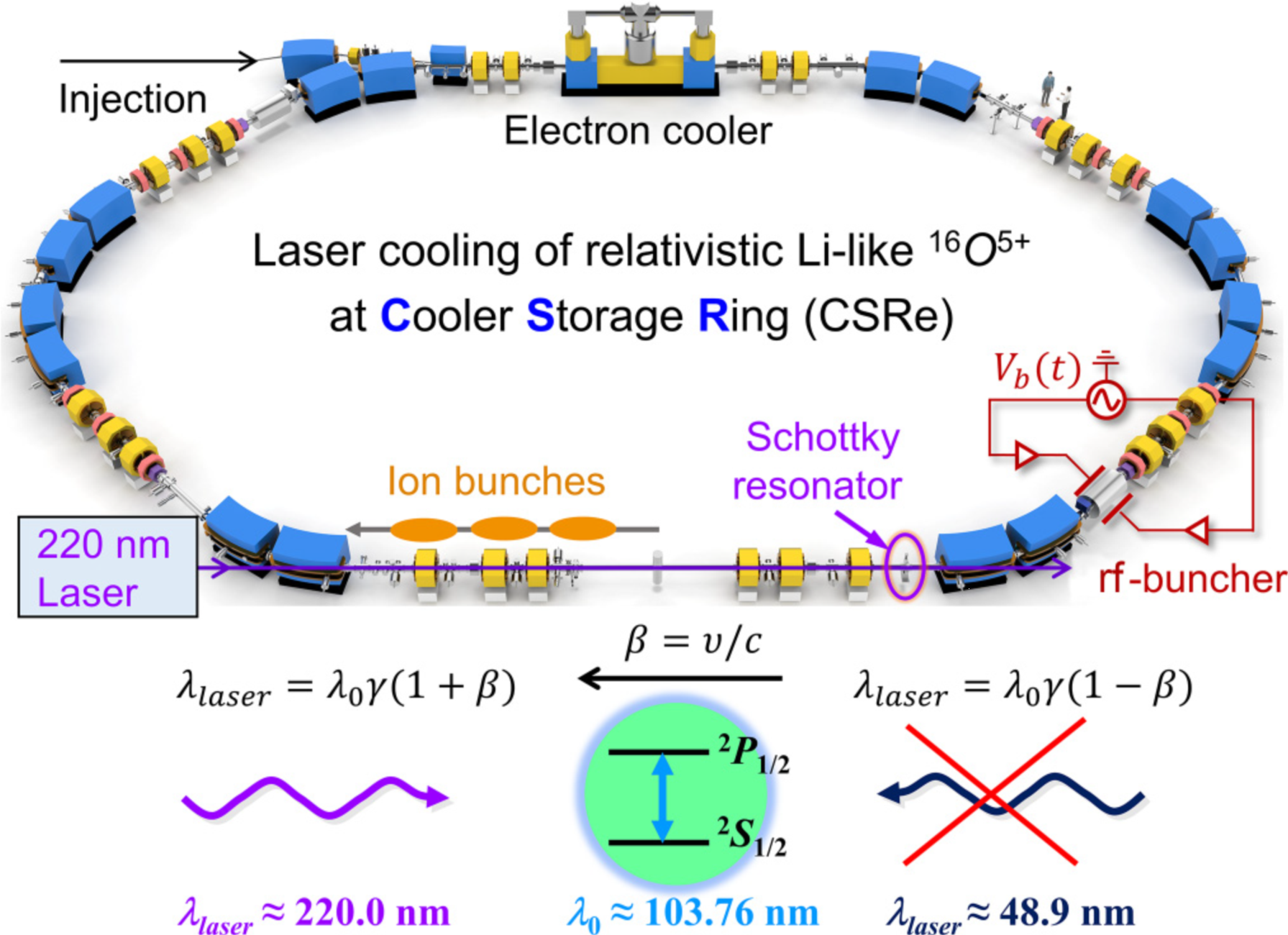Scientists Report First Laser Cooling and Precision Laser Spectroscopy of Stored Relativistic Li-like O5+ Ions
Researchers at the Institute of Modern Physics (IMP) of the Chinese Academy of Sciences (CAS) and their collaborators have recently conducted the first experimental research on laser cooling and precision laser spectroscopy of Li-like 16O5+ ion beams.
The experiments were carried out at the experimental Cooler Storage Ring (CSRe) at the Heavy-Ion Research Facility in Lanzhou (HIRFL). According to the study, Li-like 16O5+ is the ion with the highest charge state, the highest transition energy, and the highest kinetic energy that has ever been directly laser-cooled.
Laser cooling and manipulation of ions in traps have proven to be powerful and valuable for atomic physics, precision metrology and fundamental symmetries studies. In addition, laser cooling is considered to be the most promising method to realize the phase transition and even crystalline ion beam regime at storage rings, which are of great interest for accelerator physics and precision measurements in atomic physics and nuclear physics.
As of today, only a few ion species have been laser-cooled at heavy-ion storage rings due to the very short transition wavelengths in highly charged ions and the lack of suitable laser systems at those wavelengths.
The researchers achieved laser cooling of bunched 16O5+ ion beams at relativistic energy at CSRe. The initially injected and bunched ion beams have been laser-cooled using a continuous-wave, single-mode narrow linewidth diode laser system. Besides, the researchers simulated the longitudinal Schottky spectra of laser-cooled bunched ion beams with the multi-particle tracking method, providing valuable insights into the experimental observations.
Moreover, the researchers investigated the fine-structure splitting transition 2S1/2-2P1/2 in lithium-like O5+ in a laser spectroscopy experiment at CSRe. Using a Schottky resonator with very high sensitivity, they successfully identified the excitation resonance between the laser light and the ions.
The study paves the way for laser cooling and precision laser spectroscopy at the future large heavy-ion accelerators, such as the High Intensity heavy-ion Accelerator Facility in China and the Facility for Antiproton and Ion Research in Germany.
The study was conducted in collaboration with Xidian University, GSI Helmholtzzentrum für Schwerionenforschung, Technische Universität Darmstadt, Helmholtz-Zentrum Dresden-Rossendorf and Center for Advanced Systems Understanding.
The result of laser cooling was published as a Letter in Physical Review A on July 23,and the result of precision laser spectroscopy was published in Nuclear Instruments and Methods in Physics Research A on June 8.
DOI:https://doi.org/10.1103/PhysRevA.110.L010803
https://doi.org/10.1016/j.nima.2024.169496

Figure. Schematic of the laser cooling and precision laser spectroscopy setup at the CSRe. (Image by WEN Weiqiang)
Contact:
LIU Fang
Institute of Modern Physics
Email: fangliu@impcas.ac.cn
Contact Information
Institute of Modern Physics
Email: fangliu@impcas.ac.cn



 甘公网安备 62010202000713号
甘公网安备 62010202000713号


